by Peter Hayes and Roger Cavazos
April 11, 2013
Click here to download the PDF version of this report
Nautilus invites your contributions to this forum, including any responses to this report.
CONTENTS
II. Report by Peter Hayes and Roger Cavazos
IV. Nautilus invites your responses
In this report, Peter Hayes and Roger Cavazos “examine one North Korean account of the limited war it might fight to occupy Seoul, including the use of nuclear weapons or other unspecified WMD to neutralize American forces. We find that while this account makes for fine propaganda, when viewed through the lens of conventional capabilities, the plan is mainly smoke and mirrors. Nonetheless, if this account is indicative of the belief system of North Korea’s leadership, then it is truly alarming. It suggests that North Korea still adheres to military strategies and tactics that failed in the Korean War, and would fail again, only faster, should war break out in Korea. Moreover, it suggests a fantastic belief that somehow early escalation to nuclear war could make possible a conventional pre-emptive attack on Seoul.”
Peter Hayes is director of Nautilus Institute and Professor of International Relations at RMIT University in Melbourne. Roger Cavazos is an Associate of Nautilus Institute and retired US military intelligence officer.
The views expressed in this report do not necessarily reflect the official policy or position of the Nautilus Institute. Readers should note that Nautilus seeks a diversity of views and opinions on significant topics in order to identify common ground.
II. Report by Peter Hayes and Roger Cavazos
PROPAGANDA, FIRE-THRASHING, AND THE RISK OF NORTH KOREAN FIRST-USE OF NUCLEAR WEAPONS IN KOREA
It is not easy, confronted with North Korea’s bellicose nuclear threats, to infer its leader’s intentions. Its propaganda harps endlessly on the imminent threat of an American or combined US-ROK pre-emptive attack on the DPRK, sometimes said to be nuclear, other times, conventional in nature. The DPRK has threatened to retaliate to such an attack, variously, with nuclear attacks, the occupation of Seoul, the eviction of American forces from Korea, and the firing of nuclear weapons at Seoul and Washington.
In this essay, we examine one North Korean account of the limited war it might fight to occupy Seoul, including the use of nuclear weapons or other unspecified WMD to neutralize American forces. We find that while this account makes for fine propaganda, when viewed through the lens of conventional capabilities, the plan is mainly smoke and mirrors. Nonetheless, if this account is indicative of the belief system of North Korea’s leadership, then it is truly alarming. It suggests that North Korea still adheres to military strategies and tactics that failed in the Korean War, and would fail again, only faster, should war break out in Korea. Moreover, it suggests a fantastic belief that somehow early escalation to nuclear war could make possible a conventional pre-emptive attack on Seoul.
This portrayal reveals a North Korean leadership apparently ignorant of the realities of nuclear war, of the political, legal, and military constraints on nuclear war-fighting, and unconcerned about the damage wrought on the leadership’s image and reputation as potential partners in future engagement with the international community.
Sifting through this storm of propaganda, American and allied decision-makers need to keep in mind three fundamental factors that affect North Korean depiction of their own propensity to launch an attack on the United States or their kin to the South.
The first derives from an axiom of intelligence propaganda analysis. As stated classically by Cynthia Grabo, “Most propaganda is “true.””
Here we are using “truth” in a relative, not absolute sense. We mean that states cannot continually distort their objectives and policies, and particularly not to their own people. To put out totally false statements or misleading guidance is self-defeating and will not evoke the desired response. It is important, when hostilities may be impending, to instill the proper degree of hatred or fear of the adversary. The leadership cannot afford to give a wholly false picture of the situation to the populace.[1]
A second, derivative rule of thumb, was formulated by Alexander George in his account of intelligence analysis of Nazi propaganda during World War II. “German propaganda,” he states, never deliberately misled the German people in questions involving an increase of German power”[2]
The third is that at the end of the day, North Korean leaders know that any use of nuclear weapons will lead to immediate annihilation, either by nuclear retaliation (very unlikely in our view), or by conventional occupation and extermination of the regime (almost certain). Thus, while the DPRK’s nuclear threat rhetoric may leave the reader wondering whether Kim Jong Un is crazy like a spoiled brat, crazy like a fox, or crazy like a wolf–that is, it’s impossible to know what he hopes to achieve in the current confrontation–we are convinced that his nuclear threats are not militarily credible. Of course, because Kim is manipulating the risk and anxiety associated with weapons of mass destruction, no-one is laughing.
North Korea does not publish a military white paper or any other statistics related to its military forces for that matter. That’s left to the US Defense Intelligence Agency, or the ROK National Intelligence Agency. It does, however, constantly pump out propaganda about its “physical deterrent’ capabilities, and often refers in general ways to its ability to crush US and ROK forces, melding images of individual soldiers hurling themselves onto American tanks clutching a hand grenade with graphic images of missiles attacking the DPRK’s enemies. These do not just appear on stamps or North Korean websites. They are found everywhere in “daily life,” on billboards, in factories, in schools. We encountered one in an electric appliance factory in Pyongyang while discussing North Korea’s wind turbines in 1998. However, these ubiquitous images are almost always condensed symbols with little “hard” information.
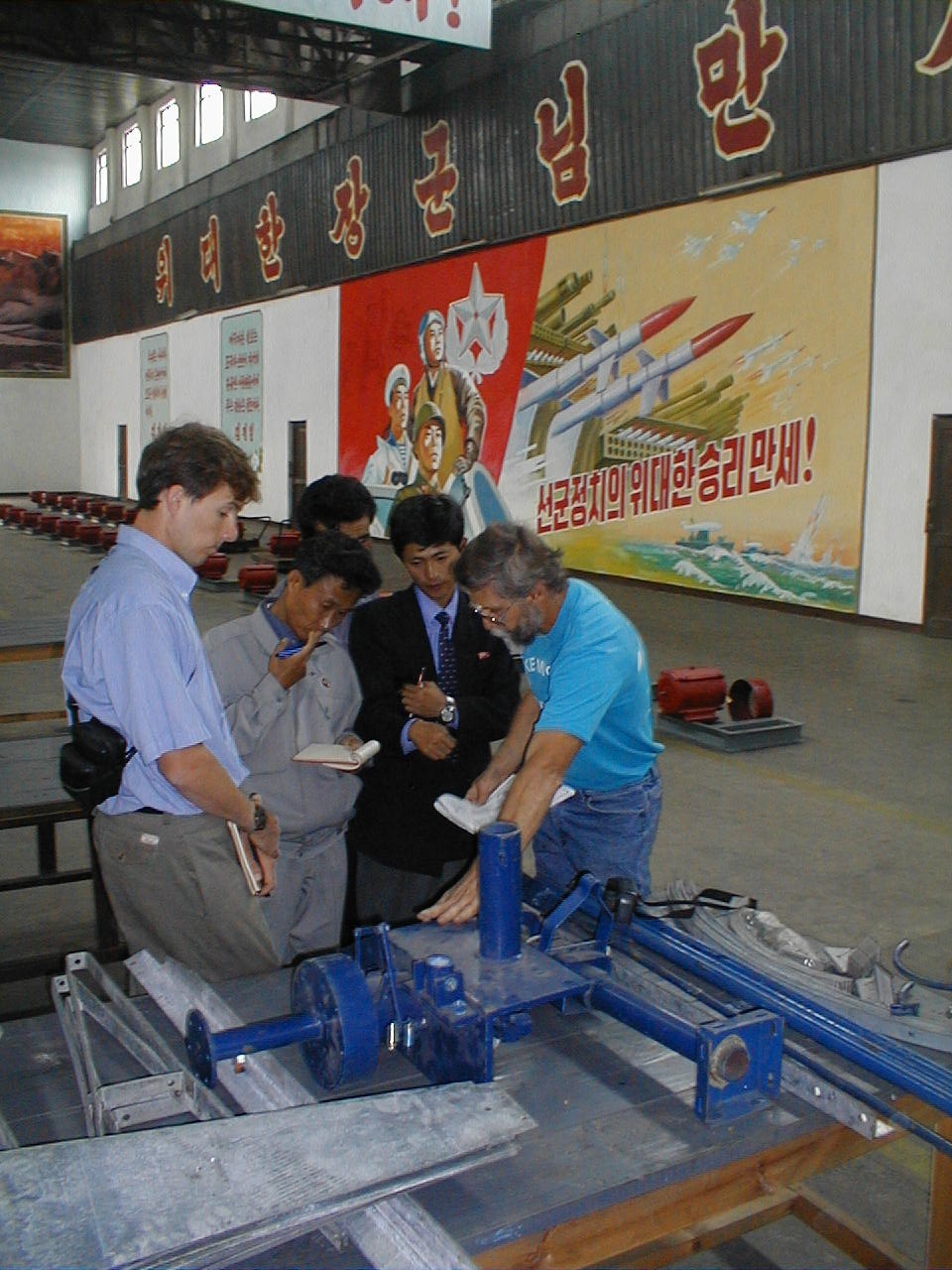
Nautilus team in Electric Appliance Factory #1 in Pyongyang inspecting wind turbines in 1998. On the wall behind, the big horizontal banner says, “Long Live the great general” (that is, Kim Jong-il). The poster with missiles below that banner says, “Long Live the Great Victory of Seongun Jeongchi” (that is, Military First Politics)
Thus, we were struck by a recent North Korean propaganda movie (aimed at an external, not a domestic audience it must be noted) that contained unusually specific information about its conventional military forces and strategy. On March 21, as the current crisis began to escalate, the DPRK’s website Uriminzokkiri[3] posted a video on YouTube outlining a three-day war scenario entitled “Short-Term, Quick War That Will End in Three Days.”[4]
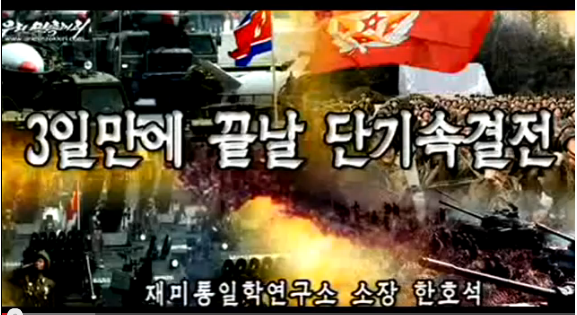
Video Title: “Short-Term, Quick War That Will End in Three Days.” Narrated by Han Ho-so’k, director of the Center for Korean Affairs
It provides us with a useful opportunity to re-examine the North’s conventional military strategy and its offensive capability for a “pre-emptive” or retaliatory strike against US-ROK attack—as against a gigantic barrier that stops the northward or southward movement of Koreans. It will also enable us to speculate about the rationality of the North Korean perceptions of their own military power, and the danger of nuclear first-use by North Korea that may arise from this belief system.
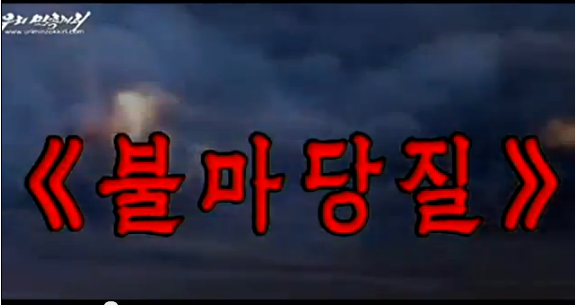
Narrator: In the North, “불마당질”is called fire-thrashing (it might also be translated as fire-threshing, as in winnowing wheat, but by fire)
The video described the “North’s prospective scenario of a great war for reunification” as starting with a “fire-thrashing.” The latter, the video’s narrator Han Ho-so’k defines helpfully, is a “volley fire bombarding like shower” that will be visited upon US and ROK forces in “a sudden preemptive strike.” There is no doctrinal definition of “fire-thrashing” so the narrator’s definition must be taken at face value.
What’s interesting here is the unusual specificity of the description: “On the first day of a short-term, quick war, for 30 minutes upon receipt of the order to fire, artillery units under four army corps of the people’s army on the front line will shower the US-South Korean Combined Forces’ bases with 250,000 rounds of 240-mm multiple launch rocket systems and mid- and long-range guns and 1,000 short-range missiles.”
Han explains that fire-thrashing is intended to render useless South Korean towed artillery, annihilate US-ROK artillery units that failed to establish entrenched positions, destroy helicopters before they can take off and armored units before they can move away from incoming fire. At first blush, these sound like plausible conventional military objectives achievable by the means described.[5]
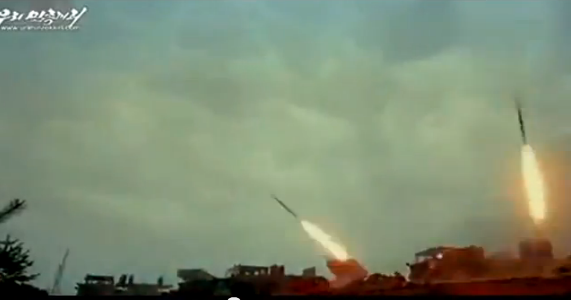
Narrator: ”Should the people’s army suddenly begin fire-thrashing, the South Korean forces towed artillery will become useless”
Simultaneously, the Korean People’s Army (KPA) will attack air force and navy bases, radar and missiles bases, power plants, and ports in the rear areas with 50,000 special operations light infantry units while “storm troopers” will enter cities, including Seoul, occupy key bases, and capture 150,000 Americans.
That’s day one.
On day 2, the KPA will head south. About 10,500 paratroopers will be dropped from 80 meters over large cities to engage in street battles with ROK forces.
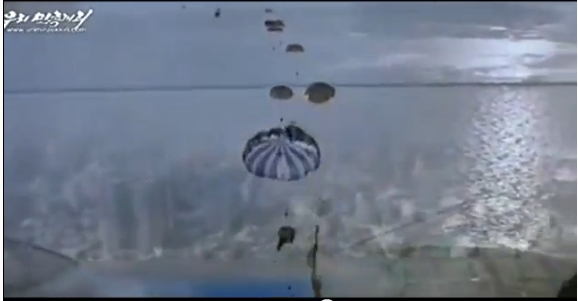
Narrator: About 10,500 paratroopers of the people’s army will engage in street battles with South Korean forces’ units in the rear areas.” (Note: presence of water may be meant to indicate Incheon or Pusan or any other coastal city.)
“Meanwhile, four mechanized army corps of the people’s army will drive down a deluge of 4,600 tanks and 3,000 armored vehicles. Next, boarding military transport vehicles, the people’s army infantry corps will advance into each city of the South, and sporadically yet completely sweep away South Korean forces’ units in the rear areas.”
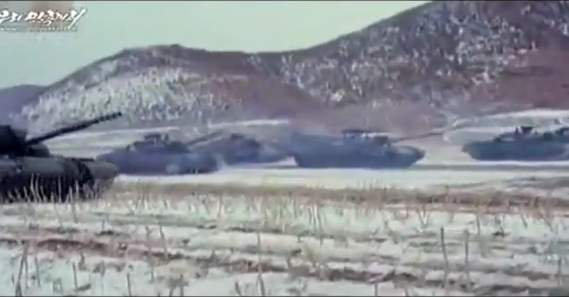
Narrator: “Meanwhile, four mechanized army corps of the people’s army will drive down a deluge of 4,600 tanks and 3,000 armored vehicles.” Note the close spacing.
What about US forces? No worries: “the people’s army will instantly subdue the US Pacific Command (on Hawaii) by carrying out a preemptive strike, with powerful weapons of mass destruction.”
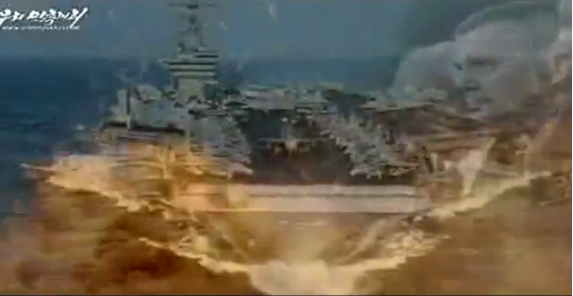
Narrator: “At the time of the start of a short-term, quick war, the people’s army will instantly subdue the US Pacific Command” (Note the presence of both uniformed military and civilians)

Narrator: “…by carrying out a preemptive strike, with powerful weapons of mass destruction, against the fighting power under it.”
On day 3, the fighting will be over, and the KPA will be busy conducting stabilization operations, maintaining public peace and restoring supply systems in South Korea’s cities. If this video is believed, that’s the KPA’s plan for a three day “great war for reunification.”
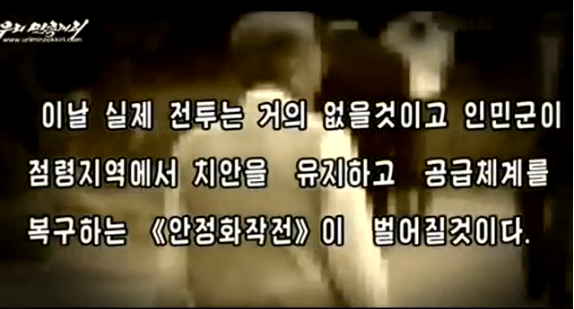
Narrator: “On that day there will be no actual combat, but the people’s army will conduct stabilization operations, maintaining public peace.”
Overall, this plan has an air of plausibility in that it envisions and outlines specific military objectives and conventional military capabilities to achieve those objectives. But let’s examine some of the links in this chain. If any link breaks down, the whole chain fails.
First, can the DPRK inflict a successful “fire-thrashing?”
To fire 250,000 rounds in 30 minutes from 240mm multiple rocket launchers (MRLs), North Korea must drop 8,333 shells per minute. 240mm MRLs can fire either 12 or 22 rockets depending on the model. If we assume that all North Korean MRLs fire 22 rockets (not true), then they need to fire about 379 MRLs per minute. Each MRL must fire 22 rockets in less than a minute, has to take about 15 minutes to recover, go back to a hiding place, reload and then fire again. To inflict a “fire-thrashing” therefore requires North Korea to have no less than 5,685 of these rocket launchers – and that’s assuming every system is in perfect order and every rocket works. It also assumes that the KPA is willing to expose all of their MRLs at the same time.
In reality, sustaining the fire rate of 8,333 shells per minute would take far more MRLs. Not all of the 240mm MRLs fire 22 rounds, not all the MRLs will work, not all the rockets will explode, and it would be tactically unwise if not suicidal to expose all the MRLs at the same time. The last time North Korean MRLs lobbed shells at South Korea, about 25 percent were duds. The North Koreans conducted many artillery firing exercises. The U.S. and ROK possess sensors to detect atmospheric and ground vibrations for early warning that enable it to monitor these exercises in detail. In the course of these exercises, it has been evident for many years that the KPA has serious quality control problems in the production of rounds for its long-range artillery and rockets. Whether these problems are reported up the North Korean chain of command is unknown.
How many 240mm MRLs do the North Koreans have? There are no precise estimates in the public domain. Overall, the DPRK is said to have 5,100 MRLs,[6] but this includes smaller 107mm and 122mm, and units in reserve. ROK press reports state that the artillery corps that directly threatens Seoul and US-ROK forces in the sectors leading southwards have about 200 240mm MRLs.[7] However, it is unclear how many carry 12 rockets (which almost halves North Korea’s rate of fire) and how many carry the 22 rocket pods. Overall, a reasonable estimate of 240mm MRLs in the entire DPRK is around 400 MRLs. So about half of their MRLs are forward deployed, and about half are scattered throughout the country, and likely concentrated around the capital.
Thus, instead of the needed 5,686 240mm MRLs to deliver the fire-thrashing attack, they appear to have about 7 percent of what they would need on optimistic assumptions.[8]
Next consider moving 50,000 special forces troops into South Korea after the “fire-thrashing.” The DPRK has too few aircraft of types to move this many people in a day—leaving aside the wall of lead and missiles that aircraft approaching the DMZ would have to evade. That many soldiers could not pass the DMZ without being seen or hitting mines. Undiscovered tunnels might allow some to enter a relatively remote area, but they would still have to walk to a city to have any military impact. A flotilla of hovercrafts advancing over coastal waters would be noticed immediately. It is doubtful that the DPRK could infiltrate 50,000 “sleepers” into Seoul before launching a pre-emptive strike given divergent accents and mannerisms over so many decades of separation.
It is possible that some of the 10,500 paratroopers could make it through. North Korea does have a cloth variant of the AN-2 COLT aircraft with a very low radar signature. They would carry some weapons and maybe some disruptive equipment like GPS jammers which admittedly do freeze up ATM cash dispensing machines. So they would be noticed! How long those who made it to Seoul would last given the well- practiced military police and an angry population of roughly twenty-five million greater metropolitan Seoulites is anyone’s guess-but it seems unlikely that even all 10,500 North Korean paratroopers could quell Seoul in a day!
The most significant element in the posited three day attack scenario is the southward offensive of armored forces on day 2. This is important not only because of the sheer momentum and firepower of these forces; but because they present the only possibly attractive target for US nuclear weapons—this being one of the main usages envisioned during the period of “maximum nuclear war-fighting” in US plans in the 1970s.
In principle, driving 4,600 tanks and 3,000 armored vehicles into Seoul is possible in that there are far more vehicles on the road than that on any given day. That is, the vibrant South Korean economy possesses a road infrastructure capable of supporting 7,600 vehicles once one gets south of the DMZ. From the DMZ to Seoul is also within unrefueled ranged for all the vehicles listed. But amassing 7,600 vehicles so they can get ready to pounce from the DMZ presents an inviting target set. If they are lined up single file, the line stretches for almost 149 miles given that each vehicle takes up at least 100 linear feet. Most importantly, based on geography, there are only three broad corridors large enough for an invasion route. The same invasion routes have been used for millennia. All sides know the routes with precision. Some defiles are so narrow that only a few vehicles can pass through at a time. Those bottlenecks are well guarded and well-prepared.
Those who have driven through Korea are familiar with the spikes and the columns designed to drop down and block movement in these areas. The KPA does not have an airlift capacity to move more than a handful of tanks, assuming they even make it through the air defenses. It has not practiced moving such a large force by sea before, which makes it not likely they would do so with their main force in wartime for the first time—not to mention doing so would make it literally a sitting duck for US and ROK targeteers.
However, not many tanks have to get through in order to create havoc. But if North Korea is looking to impose order and occupation, more than a few tanks will have to get through. Even after a “fire-thrashing,” US and ROK forces do not have to destroy many of these vehicles to block both ends of the KPA armored columns, thereby immobilizing those in between to become static targets. In short, the notion that a Soviet-style armored force will be able to “crash through” into South Korea is not credible.
What about the third day? Could North Koreans who had occupied Seoul actually restore the basic infrastructure? North Korea lacks experience on operating infrastructure of the complexity and scale found in a megacity like Seoul. It’s highly improbable North Korean operators could learn, overnight, how to bring South Korea’s cities back on-line after destroying many of the power plants and logistical systems that service the basic needs of these cities. This in turn means that the population will not be pacified.
The 3 day scenario apparently assumes that US forces have been disabled by the use of weapons of mass destruction. How and where such attacks are made is not specified, but without this assumption, the KPA cannot wish away US airpower from the scenario on days 1 and 2, which otherwise would suppress much of the fire-thrashing over the first 48 hours, and would also bring the KPA’s armored columns to a smoking, charred halt.
The apparent ease with which North Korea escalates to pre-emptive use of nuclear weapons in this three day war scenario belies their statements elsewhere that they intend to act like a responsible nuclear weapons state.[9] It reveals an apparent indifference to the humanitarian consequences of using nuclear weapons, and the legal implications of such use, including the use of nuclear weapons as a form of aggression as defined in the UN Security Council’s 1995 resolution 984,[10] and the World Court’s rulings on the legality of nuclear weapons and nuclear threats. At the very least, North Korea’s leaders could expect to be charged with crimes against humanity after such use. Having designated himself as the sole person authorized to use nuclear weapons in North Korea, Kim Jong Un could expect to be held accountable.[11]
If the KPA were to use nuclear and/or chemical WMD in Korea to disable US or ROK forces, then it would bring not only bring into play American forces, but also those of other great powers. Chinese citizens make up about 77% of Seoul’s foreign population and over a 100,000 live in the northern sector of Seoul that might be subjected to terror attacks by North Korean long-range artillery or MRLs.
The Chinese community in Seoul has many diplomats, Chief Executive Officers of large multi-national corporations and students. Many have high rank in China’s Communist Party. Perhaps the DPRK would not care about killing large numbers of the citizens of its putative ally by using WMD against US forces in Korea. However, such an attack would likely lead to China opening a second front against the KPA rather than China providing support of various kinds as in the Korean War. Although not all its DPRK-related decisions are driven by economics, China would also likely to be upset at losing a substantial portion of a 215 billion dollar a year trade relationship with South Korea[12]. China’s trade relationship with North Korea was just under 6 billion dollars in 2012[13].
A North Korean WMD attack against Pacific Command in Hawaii or US forces based Guam might achieve a major disruption of American reinforcement of the ROK in a major war—but this disruption would have little direct military effect on a three day war scenario, given that reinforcement will take weeks and months, not hours and days. At this stage, the DPRK’s long-range missiles are not capable of delivering such strikes, so the credibility of this element of the 3 day scenario rests on the KPA employing an “a-symmetric” WMD delivery system such as a fishing vessel or a foreign-flagged North Korean merchant ship. These would have to be pre-positioned with perfect timing to coincide with the outbreak of the 3 day war—with all the risks of prior discovery and interception in the age of UN 1540 and Container Security Initiatives.
Overall, therefore, we conclude that this three day “great war for reunification” would likely fail disastrously for the DPRK. As a basis for a “pre-emptive” strategy of deterrence, it is not convincing, especially when one factors in the countervailing military forces that would immediately come into play the moment the DPRK attacks begin.[14]
Recalling Grabo and George’s argument that propaganda does not lie in the relative sense of the word, and in light of this review of the surreal military strategy described in the North Korean video, how then do we read this propaganda?
Assuming that while disavowable, this video was authorized by someone issuing orders in Pyongyang, perhaps the scariest interpretation is that North Korea’s leadership considers this three day scenario to be an authentic portrayal of their offensive military strategy; and it reflects a plausible belief on their part that a plan with the limited objective of capturing Seoul might work. They may also believe that conventional deterrence is strong at the DMZ, and that this is a basis on which to conduct nuclear psychological warfare against its external adversaries. North Korea may have decided that the limited military objective of taking Seoul provides them with enough leverage to negotiate reunifying the Peninsula—provided that they can negate American forces by using nuclear weapons.
Above all, the video suggests that the KPA is preparing to fight its last war. That war also began on June 25, 1950 with a “lightning strike” that almost forced the American military off the Peninsula. Planning to fight the last war afflicts the military strategy of many other militaries around the world. For the KPA, which has not fought a war since 1953 (or alternatively has been fighting the same war since 1950), orthodox thinking and organizational habits are particularly rigid.
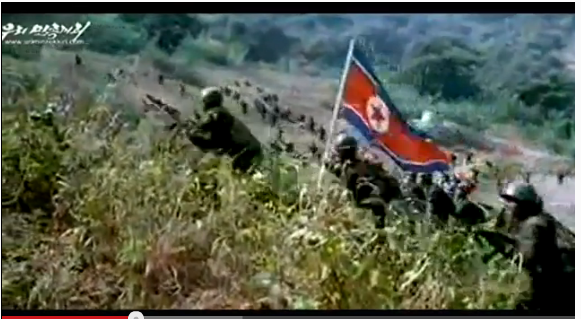
Narrator: “The second day of the short-term, quick war is a day when the people’s army begins an all-out offensive heading south.”
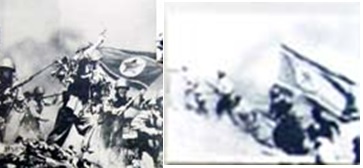
North Koreans in battle in Korean War. The actions in the two preceding pictures are separated by 60 years, but conceptually they remain frozen in time. Source: Victorious Fatherland Liberation Museum, at: http://www.naenara.com.kp/en/book/new_window.php?10+10093+19++korean
Their problem is that last time they played that hand, they were stalemated at the DMZ after three years of bloody war in which millions of Koreans and Chinese died, and scores of thousands of soldiers from other countries. This time, it would take months, not years, for the US and the ROK to repel and then destroy the North Korean military, and there is little prospect of restoration of the DMZ once a war breaks out. The U.S. and China share broad economic and security objectives this time instead of the antagonistic world-views of the 1950s. North Korea faces defeat, not stalemate, in short order.
Having analyzed the video’s three day scenario, we conclude that the main reason that a pre-emptive war is impossible is not because Kim Jong Un’s nuclear forces are incapable of eliminating US forces from the field, but because the KPA’s conventional forces are in a parlous state. It retains an absolute capacity to inflict terrible damages and huge casualties at the outset of a war, but not sufficient to fight and win a pre-emptive war (or any war, for that matter). Therein lies North’s real, limited deterrent, such as it is.
The KPA surely knows that its conventional deterrent credibility, while significant, is declining rapidly, and that they do not yet have a credible nuclear force that is capable of offsetting this deficit sufficiently to launch a pre-emptive attack on the ROK and its allies. There are no military means whereby the DPRK can recover its national power compared to the ROK, let alone overcome the ROK and forcibly capture Seoul let alone reunify the Peninsula.
This fact presents Kim Jong Un with his greatest challenge: his non-military power resources are, almost without exception, weaker than those of the ROK.[15] Is there anyone in the KPA capable of telling Kim Jong Un the unwelcome truth that his conventional military, after 14 years of Songun or military-first politics, is not able to conduct a three day reunification war and that using WMD will not save the day?
III. REFERENCES
[1] C. Grabo, Anticipating Surprise; Analysis for Strategic Warning, p. 91, reprinted by Joint Military Intelligence College’s Center for Strategic Intelligence Research, 2002, at: http://www.ni-u.edu/ni_press/pdf/Anticipating_Surprise_Analysis.pdf
[2] A. George, Propaganda Analysis: A Study of Inferences Made from Nazi Propaganda in World War II, Rand Corporation, Row, Peterson and Co., I959, p. I43. Here, George was referring to domestic Nazi propaganda related to a “secret weapon” that turned out to be the V1 and V2 rocket.
[3] Uriminzokkiri is website run out of Shenyang, China by the Committee for the Peaceful Reunification of the Fatherland (CPRF), which, according to ROK media, falls under the Workers Party of Korea United Front Department, at: http://www.youtube.com/user/uriminzokkiri
[4] The original website, at: http://www.youtube.com/watch?v=9VQ7NjGeIRw&list=UUknqqNd3-joIjWzf1Jn4oVQ&index=152 was n hacked and is sometimes unavailable, but the video is also viewable at: https://www.youtube.com/watch?v=SGt6dJU3JSE which also provides a rough transcript of the video.
[5] A good description of the KPA’s offensive doctrine related to this video’s portrayal of “firethrashing” is found in “Artillery Support to Offensive Operations,” North Korea Country Handbook, Marine Corps Intelligence Activity, Quantico, May 1997, pp. 77-81, at: http://nautilus.wpengine.netdna-cdn.com/wp-content/uploads/2011/12/MarinesDPRKCountryHandbook.pdf and James Minnich, North Korean Tactics, Republic of Korea Army College, United States Embassy, Defense Attaché Office, Revised during attendance of the United States Army Command and Staff College, Fort Leavenworth, Kansas, 2001, at: http://nautilus.wpengine.netdna-cdn.com/wp-content/uploads/2011/12/NorthKoreanMilitaryTactics.pdf
[6] Ministry of National Defense, Republic of Korea, Defense White Paper 2010, p. 30, at: http://www.mnd.go.kr/cms_file/info/mndpaper/2010/ebookAll_eng/defense/book.html
[7] Anon, “The Devastating Power of N.Korea’s MRL Artillery,” at: http://english.chosun.com/site/data/html_dir/2010/11/26/2010112600744.html
[8] The DPRK fields other long range artillery that would also inflict a “fire-thrashing,” namely, the KOKSAN 170 mm M1978 and M1989 artillery pieces each with the same range, 60 km with Rocket Assisted Projectiles. However, adding these units at most would double the fire rate and would still leave the KPA far short of what they would need to fire at the rate stated in this video. See Roger Cavazos, “Mind the Gap Between Rhetoric and Reality,” NAPSNet Special Report, June 26, 2012, at: https://nautilus.org/napsnet/napsnet-special-reports/mind-the-gap-between-rhetoric-and-reality/#ixzz2Q1EU968t
[9] “As a responsible nuclear weapons state, the DPRK will make positive efforts to prevent the nuclear proliferation, ensure peace and security in Asia and the rest of the world and realize the denuclearization of the world,” in KCNA, “Report on Plenary Meeting of WPK Central Committee,” March 31, 2013, at: http://www.kcna.co.jp/index-e.htm and included as Appendix 2 to P. Hayes, R. Cavazos, “Rattling the American Cage: North Korean Nuclear Threats and Escalation Potential,” NAPSNet Policy Forum, April 4, 2013, at: https://nautilus.org/about/staff/peter-hayes/#ixzz2Q1IYlHoh
[10] Which declares that the UN member states are to respond to the use or threat of use of nuclear weapons as aggression against non-nuclear weapons states, and provides also for compensation for states subjected to such attacks or threats from nuclear armed states. See text of the UNSC resolution 984 on security assurances against the use of nuclear weapons to non-nuclear-weapon States that are Parties to the Treaty on the Non-Proliferation of Nuclear at: http://daccess-dds-ny.un.org/doc/UNDOC/GEN/N95/106/06/PDF/N9510606.pdf?OpenElement
See also International Court of Justice, Legality of the Threat or Use of Nuclear Weapons, Advisory Opinion of 8 July 1996, at: http://www.un.org/law/icjsum/9623.htm
[11] “4. The nuclear weapons of the DPRK can be used only by a final order of the Supreme Commander of the Korean People’s Army to repel invasion or attack from a hostile nuclear weapons state and make retaliatory strikes,” in KCNA, “Law on Consolidating Position of Nuclear Weapons State Adopted,” April 1, 2013 at: http://www.kcna.co.jp/item/2013/201304/news01/20130401-25ee.html
[12] Troy Stangarone, South Korea seeks its own reset with China, China-U.S. Focus, 8 April 2013, available at: http://www.chinausfocus.com/foreign-policy/south-korea-seeks-its-own-reset-with-china/
[13] Christine Kim, “North Korea’s trade growth with China slows sharply in 2012”, Reuters Press, 6 March 2013., at: s,, http://www.reuters.com/article/2013/03/07/us-korea-north-trade-idUSBRE92605A20130307
[14] Roger Cavazos , “Mind the Gap Between Rhetoric and Reality,” NAPSNet Policy Forum, June 26, 2012, at: https://nautilus.org/napsnet/napsnet-special-reports/mind-the-gap-between-rhetoric-and-reality/#ixzz2PfGBtv9F
[15] P. Hayes, “North-South Korean Elements of National Power,” NAPSNet Special Report, February 2, 2011, at: https://nautilus.org/napsnet/napsnet-special-reports/north-south-korean-elements-of-national-power/#axzz2PNfMmZqO
IV. Nautilus invites your responses
The Nautilus Peace and Security Network invites your responses to this report. Please leave a comment below or send your response to: nautilus@nautilus.org. Comments will only be posted if they include the author’s name and affiliation


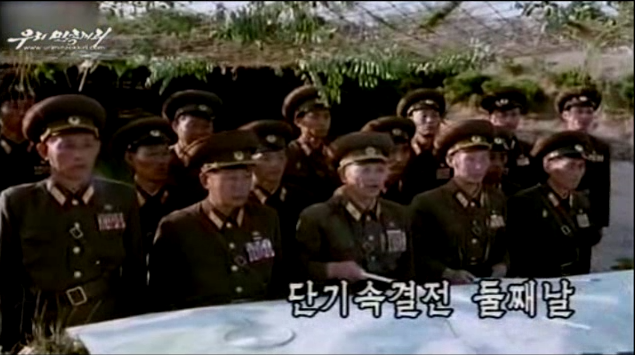
One thought on “Propaganda, Fire-Thrashing, and the Risk of North Korean First-Use of Nuclear Weapons in Korea”